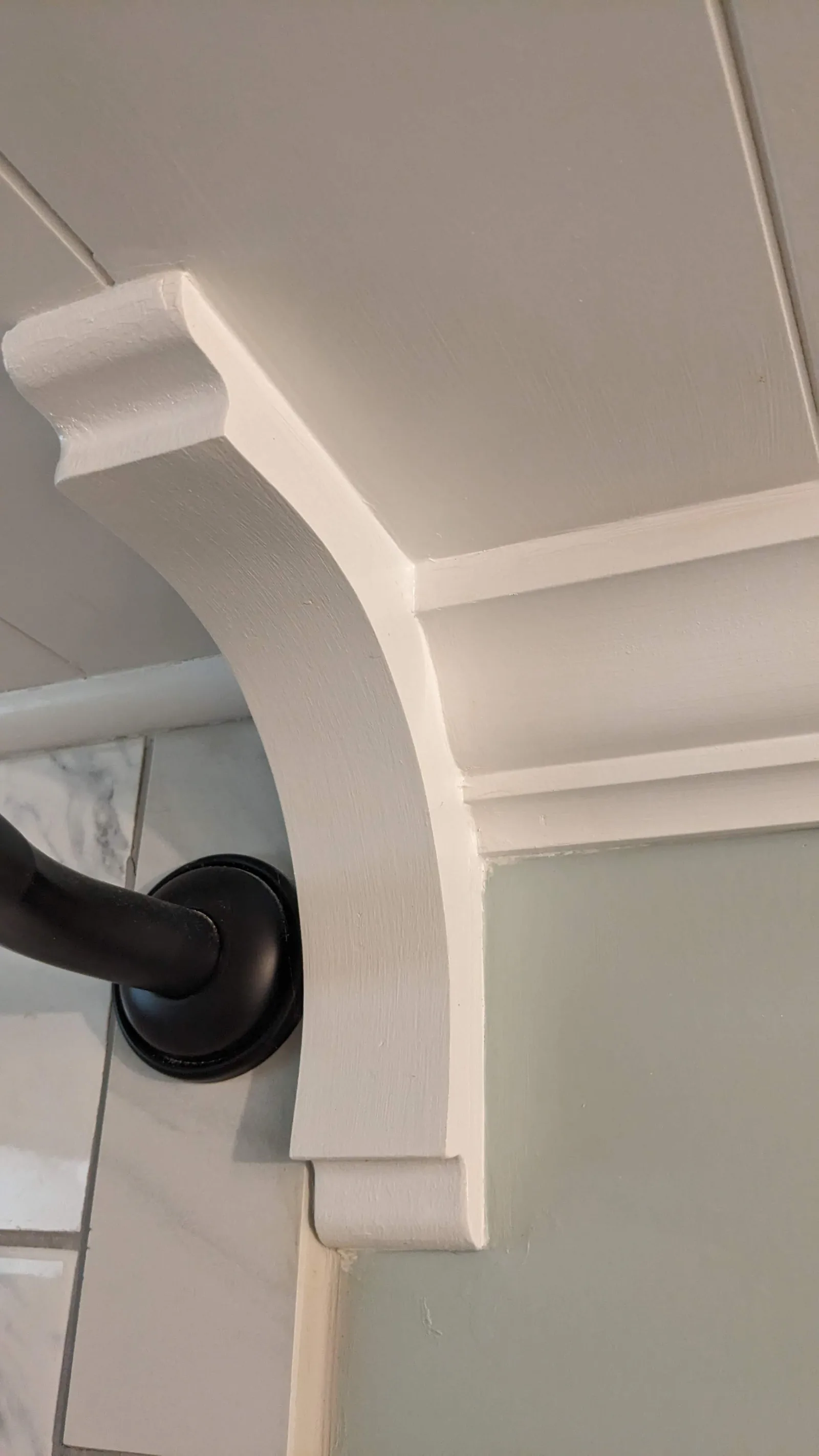Article
When trim gets awkward—an island overhang that needs support, crown that must end cleanly, or a shelf that wants to feel intentional—corbels step in. They solve functional problems and quietly elevate the room.
In kitchens, living rooms, and porches across the Piedmont Triad, we use corbels to bridge tricky depth changes, terminate molding with grace, and add “built-in” character without clutter. Used thoughtfully, they read as architecture, not decoration.
“If an edge feels unresolved, end it with purpose—often, that purpose is a corbel.”
Five Problems Corbels Solve Instantly
1) Clean crown terminations. Where cabinets stop short of a wall or window, a corbel lets crown end decisively instead of dying into thin air.
2) Countertop overhang support. At islands and peninsulas, discreet corbels share the load and make stone tops feel grounded.
3) Shelf stability & style. Open shelving looks finished when corbels align with base cabinets or tile joints—and they resist sag over time.
4) Mantel & hood definition. Corbels under a mantel or range hood add shadow lines that make the assembly feel custom.
5) Depth transitions. Where a shallow cabinet meets a deeper pantry or a wall bump-out, corbels visually “step” the change so it looks intentional.

Choosing a Style That Feels Inevitable
Craftsman & cottage: Square, chamfered, or notched profiles. Keep reveals and proportions simple.
Traditional & classic: Light scrolls or ogee sweeps pair well with crown and picture-frame molding.
Farmhouse: Chunky, straight-grained blocks with a soft radius read warm and honest.
Modern: Slim, flat brackets or concealed steel with a minimal wood wrap—shadow over ornament.
“Match the geometry you already have—stile width, rail height, crown projection—not the catalog photo.”
Corbel Sizing: Quick Rules of Thumb
- Depth: Aim for about ¼–⅓ of the supported overhang (e.g., a 15″ overhang pairs well with a 4–5″ deep decorative corbel; use rated brackets if the load requires it).
- Height: Often matches nearby stile/rail heights or ½–⅔ the height of the element above (mantel, hood face, shelf).
- Thickness: Typically 1–1¼″ for decorative; go thicker for chunky cottage looks.
- Spacing: Shelves: 18–30″ apart depending on span and stock thickness. Islands: place near seating edges and center; verify manufacturer guidance for stone tops.
Materials & Finishes That Last
Interior: Poplar (paint), maple (paint/stain), or oak (stain). Pre-prime/finish all faces for cleaner edges.
Exterior/porch: Cedar or PVC for moisture resistance; seal end grain and mount with corrosion-resistant fasteners.
Metal cores: For true structural support, pair decorative wood with hidden steel/L-brackets rated for the load.
Installation Details That Sell the Look
- Blocking first. Hit studs or add plywood backers. Corbels should feel solid when tapped.
- Layout with the room’s grid. Align to cabinet stiles, tile grout lines, or the island’s seating bays.
- Fasteners disappear. Pocket from above, countersink and fill, or use rear-mount brackets.
- Scribe and shadow. A tiny back bevel or 1–2 mm shadow line beats forcing a tight, chippy fit to out-of-square walls.
- Finish last. Caulk paint-grade joints; for stain-grade, keep crisp, no-caulk reveals.
Where We Love Using Corbels
Kitchens: Under wood hoods, at island overhangs, and beneath open shelves.
Living rooms: Mantels and built-ins—corbels repeat the cabinet rhythm and add depth.
Entries & porches: Brackets under awnings and gables add welcoming character (use exterior-rated materials).
Quick Spec Checklist for Your Quote
- Photos with rough measurements (span, overhang depth, mounting surface)
- Style direction (square Craftsman, simple radius, light scroll, minimal)
- Finish (paint color, stain species/tone)
- Function (decorative only vs. structural load share)
- Adjacent trim dimensions to align with (stile width, crown projection)
Ready to make tricky edges look intentional? We design and install corbels across Winston-Salem, Greensboro, Mount Airy, and nearby. Browse our portfolio and explore our services for more trim and finish ideas.